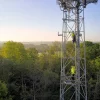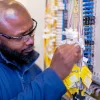Cityfibre Criticises Slow Copper Broadband for Laggy Online Games
Full fibre (FTTP) builder Cityfibre has used a new survey of 1,005 “serious” online gamers (multiplayer) as ammunition to criticise older copper based broadband (ADSL) and hybrid fibre (FTTC etc.) ISPs, which they complain have plagued users with connectivity issues (“too much lag“) and slow download speeds.
The survey, which was conducted by Censuswide between 17th and 18th September 2018, found that 54% of serious gamers (defined as respondents who game at least 4-6 days a week on a computer/console – we assume not constantly without sleep 🙂 ) had suffered from high ping (lag / latency) related connectivity issues and 45% said it had even lost them a match.
Overall, two thirds (66%) felt that the responsiveness of their internet connection – or that of other players – had interrupted their gaming experience at least once a week and 6 in 10 (60%) had been unable to enjoy a game due as a result.
Advertisement
Meanwhile 38% said their current connection would discourage them from adopting or participating in 4K gaming, while 45% thought it would inhibit them from getting involved in online tournaments and 34% said it would hold them back from exploring Virtual Reality (VR) gaming.
On top of that anybody who has had to download one of those 100GB+ digitally distributed monster sized games will know the pain of having to wait hours for the process to complete, during which time everything else can also slow to a crawl (video streaming etc.).
Naturally Cityfibre found that 85% thought their experience would improve if they had access to an ultrafast “full fibre” (FTTP / FTTH) broadband service. Mind you their survey doesn’t appear to have asked respondents for details of their current connection type, which could have added some useful context.
Mark Collins, CityFibre’s Director of Strategy, said:
“The UK is the fifth largest gaming market place in the world. The industry employs over 20,000 people, making it a multi-million-pound contributor to the UK economy.
It’s clear that gamers want better connectivity because it will give them negligible latency, symmetry of connection and great reliable speed. However, the current confusion around fibre advertising means that many will still be paying more for unreliable connection, as they seek the full-fibre gold standard but instead get a poor service that’s strangled by copper from the cabinet.”
As the limits of our aging infrastructure are reached, gamers will become increasingly frustrated with the services they are able to access. This could present a major threat to the sector’s ability to grow, and UK gamers’ ability to play. CityFibre is proud to support UK gamers and developers by building high speed full fibre networks in the UK, bringing us closer to a lag-free future.”
Cityfibre is right to point toward the frustration of long download times and it’s certainly true that FTTP connections can deliver much lower latency times, although there are a few caveats to consider here and that’s particularly true when considering the issue of connection latency.
Advertisement
Latency is a measure of the time (delay in milliseconds) that it takes for a single packet of data to travel from your computer to a third-party server and back again (aka – ping time). Most fast paced online multiplayer games generally like to have a ping time below c.60-80ms in order to run smoothly. The lower this figure, the better, although different games have different demands (latency isn’t really an issue for online chess etc.).
Your broadband connection type plays a big role in latency performance, although there are many other factors to consider too and simply blaming “copper broadband” isn’t entirely fair. Many years ago yours truly had an old 64Kbps ISDN line at home and that delivered latency times of 10-15ms, which still beats many modern superfast and even some ultrafast broadband connections today.
Personally I’ve never had a problem getting pings of around 35-50ms on ADSL or 20-40ms on FTTC lines and being able to enjoy smooth online gameplay (G.fast can do even better), although all networks (even FTTP ones) do sometimes suffer from routing / peering or other problems that can cause even the lowest of pings to spike, which disrupts play.
Since latency is a delay that must be calculated across the entire journey then it also needs to factor in external elements too, such as any delay being added via your home network (e.g. WiFi) and the remote server you’re trying to reach. Not to mention the impact of all those server hops on the way to and from the destination. Often you won’t get a good ping because the servers are simply too far away (e.g. in other countries) or aren’t very fast themselves and FTTP won’t stop that.
Advertisement
On the other hand hybrid fibre lines can sometimes struggle for latency in a busy family environment, where several users may be playing games or streaming content at the same time. This is particularly true if your package has limited upload performance, which can be a bigger issue on cheaper tiers.
As consumers increasingly move into a future where video games can be directly played via remote streaming (cloud) services, with resolutions rapidly rising from HD and into 4K, then the benefits of a full fibre connection will quickly become much more apparent. Nevertheless, as above, it would be wrong to blame copper lines for all things bad with multiplayer.
Mark is a professional technology writer, IT consultant and computer engineer from Dorset (England), he also founded ISPreview in 1999 and enjoys analysing the latest telecoms and broadband developments. Find me on X (Twitter), Mastodon, Facebook, BlueSky, Threads.net and Linkedin.
« Rollout Plan Revealed for £4.3m Orkney 5G Rural Broadband Trial
New Survey Claims 59% of UK Telecoms Workers Suffer Stress »
















































Comments are closed